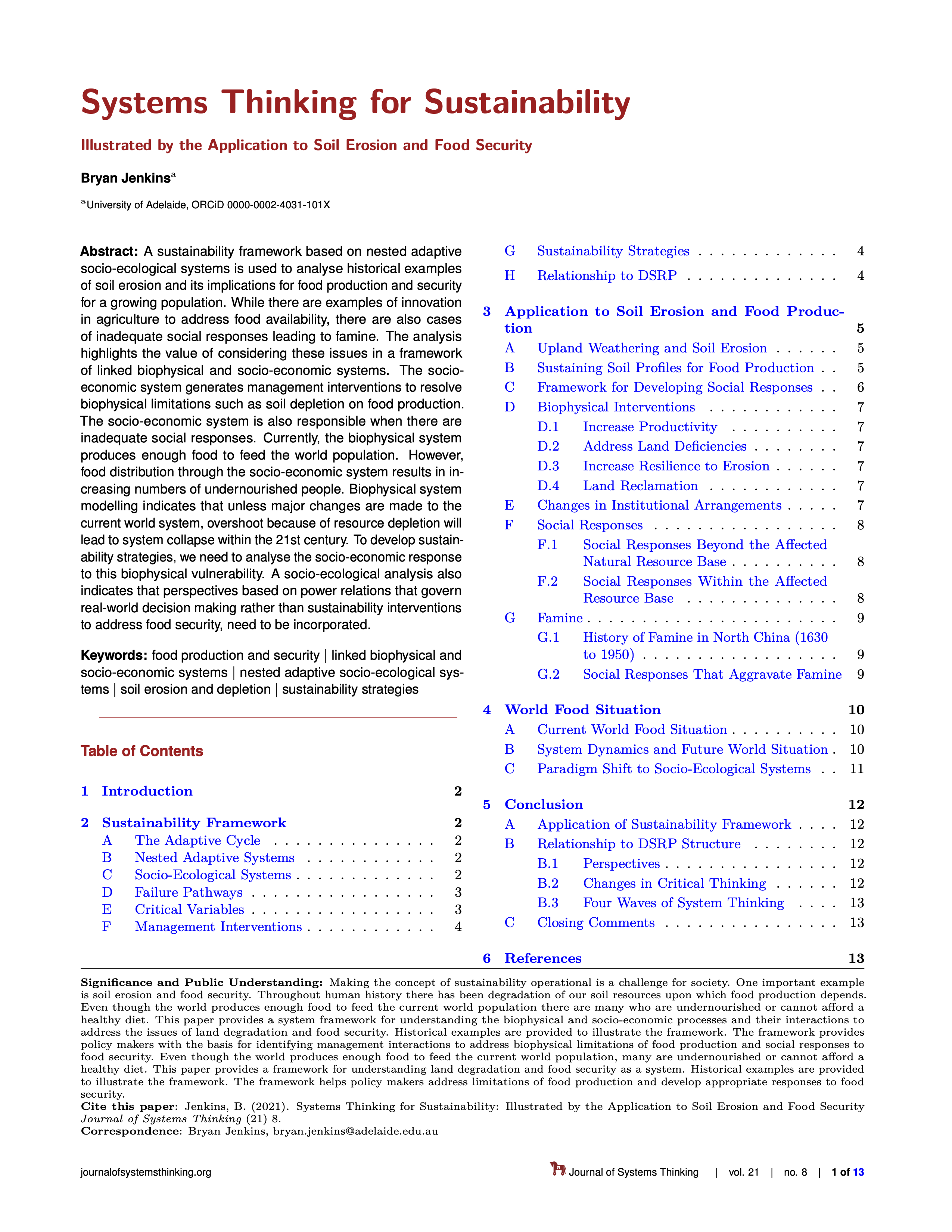Systems Thinking for Sustainability
Illustrated by the Application to Soil Erosion and Food Security
DOI:
https://doi.org/10.54120/jost.v1i1.1251Keywords:
food production and security; linked biophysical and socio-economic systems; nested adaptive socio-ecological systems; soil erosion and depletion; sustainability strategiesAbstract
A sustainability framework based on nested adaptive socio-ecological systems is used to analyse historical examples of soil erosion and its implications for food production and security for a growing population. While there are examples of innovation in agriculture to address food availability, there are also cases of inadequate social responses leading to famine. The analysis highlights the value of considering these issues in a framework of linked biophysical and socio-economic systems. The socio-economic system generates management interventions to resolve biophysical limitations such as soil depletion on food production. The socio-economic system is also responsible when there are inadequate social responses. Currently, the biophysical system produces enough food to feed the world population. However, food distribution through the socio-economic system results in increasing numbers of undernourished people. Biophysical system modelling indicates that unless major changes are made to the current world system, overshoot because of resource depletion will lead to system collapse within the 21st century. To develop sustainability strategies, we need to analyse the socio-economic response to this biophysical vulnerability. A socio-ecological analysis also indicates that perspectives based on power relations that govern real-world decision making rather than sustainability interventions to address food security, need to be incorporated.

Downloads
Published
Versions
- 2021-10-01 (2)
- 2021-08-21 (1)




